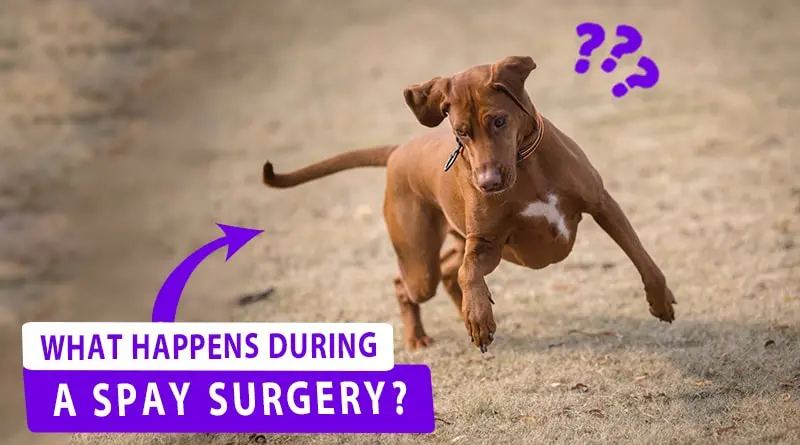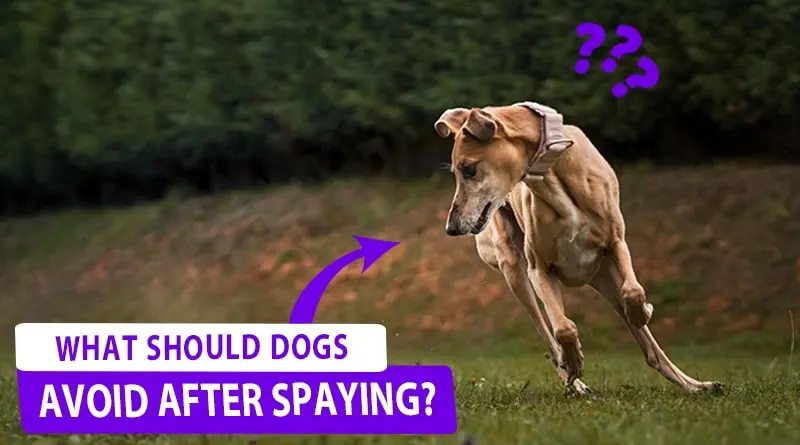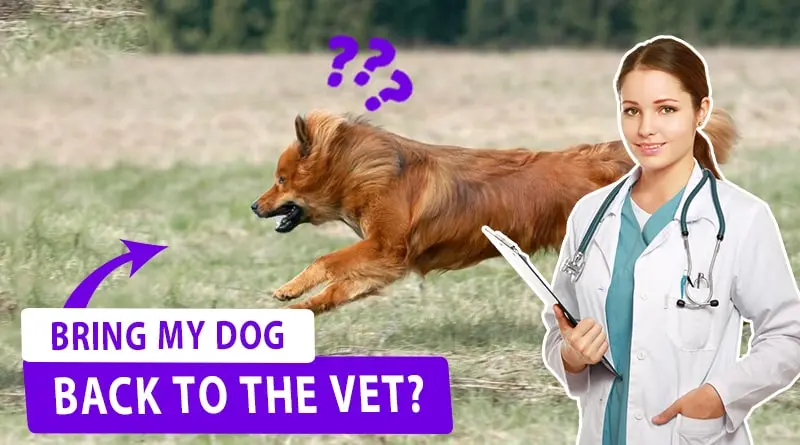
Spaying your Dog is a responsible and common procedure to prevent unwanted pregnancies and provide various health benefits. However, pet owners often have questions and concerns about their Dog’s behavior after being spayed, including the unexpected behavior of jumping. Here is the true and short answer to My Dog Jumped after being Spayed:
Why did My Dog Jumped after being Spayed?
“Sometimes, Sitting can be hurting for dogs, and due to your Dog still feeling nervous after being neutered, jumping around might be its way to reduce pain.”
In this article (My Dog Jumped after Being Spayed), we will explore what happens during a spay surgery, what dogs should avoid after spaying, and how to manage your Dog’s behavior during the recovery period.
Table of Contents
What Happens During a Spay Surgery?

Spaying, also known as ovariohysterectomy in females, is a surgical technique that affects the removal of a dog’s ovaries and often the uterus. This operation is performed under general anesthesia, ensuring that your Dog feels no pain during the surgery.
Veterinarians make a small incision in the abdominal area to remove the reproductive organs. After the procedure, your Dog is carefully monitored as it wakes up from anesthesia.
1. Incision:
The veterinarian makes a small incision, usually just above the navel, to access the abdominal cavity. The measurement of the incision may vary depending on your Dog’s size and breed.
2. Closure:
After dismissing the ovaries and uterus, the incision is carefully sutured shut with dissolvable or non-dissolvable sutures. The choice of sutures depends on your veterinarian’s preference and your Dog’s specific needs.
The incision is typically closed in layers to provide a strong and secure closure.
3. Recovery:
Once the surgery is complete, your Dog is carefully monitored as she wakes up from anesthesia. She will be kept in a warm and quiet area to recover from the effects of the anesthesia. Most dogs wake up within an hour or so after the surgery, though it can vary.
4. Anesthesia:
Spaying is performed under general anesthesia to ensure that your Dog feels no pain during the procedure. Once your Dog is sedated and fully unconscious, a breathing tube is typically inserted to maintain proper oxygen levels and deliver the anesthetic gases.
5. Postoperative Care:
After the spay surgery, your veterinarian will provide you with detailed postoperative care instructions. It’s essential to follow these instructions carefully, including administering any prescribed medications, monitoring the surgical site for signs of infection, and restricting your Dog’s activity during the recovery period.
6. Preoperative Evaluation:
Before the surgery, your veterinarian will conduct a thorough preoperative evaluation of your Dog. This includes a physical examination, blood tests, and possibly other diagnostic procedures to ensure your Dog is healthy enough for anesthesia and surgery.
7. Preparation and Sterilization:
With your Dog under anesthesia, the surgical area is thoroughly cleaned and sterilized to minimize the risk of infection. The hair around the abdominal region may be shaved to create a clean and accessible surgical site.
8. Removal of Reproductive Organs:
The primary goal of the spay surgery is to remove both the ovaries and, in many cases, the uterus. Removing both organs ensures that your Dog cannot become pregnant.
The veterinarian will carefully locate and ligate the blood vessels that supply these organs and then remove them.
Here is the Most Popular Question: “Husky Shepherd Mix“
What Should Dogs Avoid After Spaying?

After the spay surgery, it’s crucial to follow your veterinarian’s postoperative care instructions. Dogs should avoid excessive activity, including jumping, running, and rough play, during the recovery period, which usually lasts for about two weeks.
Jumping, in particular, can put a strain on the surgical site and lead to complications.
Here’s a list of important precautions:
- Excessive Activity:
- Swimming and Bathing
- Tight or Restrictive Clothing
- Licking or Chewing the Incision:
- Exposure to Dirt and Contaminants
How Do I Stop My Dog from Jumping After Neutering?
Preventing your Dog from jumping after being spayed is essential for a smooth recovery. You can use a cone or Elizabethan collar to restrict movement.
Additionally, consider using baby gates to block off areas with stairs or furniture that your Dog might try to jump on. Here are the steps you can take:
- Leash Control
- Consistent Training
- Redirect their energy
- Reinforce Calm Behavior
- Provide Adequate Exercise
Here is the Most Popular Question: “Why Does My Dog Keeps Stretching Neck and Looking Up?“
Why Is My Dog Still Hyper After Being Neutered?

Some dogs may display hyperactive behavior after being spayed due to the residual effects of anesthesia and the stress of the surgery. This behavior is typically temporary and should subside as your Dog fully recovers.
Here are some reasons why your Dog might still be hyper after being neutered:
Here is the Most Popular Question: “Understanding Why Your Dog Wakes Up Crying in Pain. “
Will My Dog Still Be Active After Neutering?
Neutering does not usually lead to a drastic reduction in your Dog’s overall activity level.
While some dogs may become slightly less active, they will continue to enjoy their regular activities once they have fully recovered from the surgery.
Should I Bring My Dog Back to the Vet?

If you notice any unusual behavior or complications during your Dog’s recovery, it’s essential to contact your veterinarian promptly.
Signs of concern may include excessive swelling, bleeding, or symptoms of illness at the surgical site. Here are some general guidelines to consider:
- Post-Surgery Care
- Breathing Difficulties
- Limping or Mobility Problems
- Appetite and Digestive Issues
- Changes in Behavior or Activity Levels
Here is the Most Popular Question: “Can Cats Eat Mochi?“
How Can I Stop My Dog from Jumping After Being Spayed?
Apart from using a cone and baby gates, you can also engage your Dog in low-energy activities to keep them mentally stimulated without risking injury.
Puzzle toys and gentle walks on a leash can help satisfy their energy needs without straining their surgical site.
How Long Does It Take for a Male Dog to Calm Down After Being Neutered?
Male dogs, when neutered, may also exhibit behavioral changes. However, these changes vary from Dog to Dog. Typically, it takes a few weeks for hormone levels to stabilize, and you may notice a reduction in behaviors related to mating, such as roaming and aggression.
Here are some general guidelines:
- Physical Recovery
- Hormonal Changes
- Immediate Post-Op
- Behavioral Changes
- Individual Variations
Here is the More Popular Question: “Do Cats Get Depressed after Abortion?“
Conclusion
Spaying your Dog is an important step in responsible pet ownership. While it’s common for dogs to exhibit jumping or hyperactivity after being spayed or neutered, it’s important to provide them with a secure and relaxed environment during their recovery.
Following your veterinarian’s instructions and using preventive measures can help to secure a smooth and successful recovery process for your furry friend.
If you have any concerns about your Dog’s behavior or recovery, do not hesitate to consult with your veterinarian for guidance and reassurance.
Here is the More Popular Question: “Can Dogs Eat Twinkies?“
Disclaimer
This Article (My Dog Jumped after Being Spayed) contains essential information. I am not a veterinarian or Pet Dietary professional. If your Dog discloses any indication of ailment, call your veterinarian.
Bear in mind that every Dog is Different, and if you have any worries regarding your Canine’s Health or practices, do not wait to seek specialist recommendations from your veterinarian.
If you want more Knowledge about Pet Nutrition, visit our Blog Section.



























